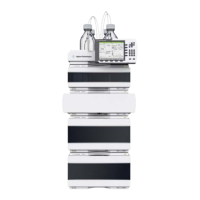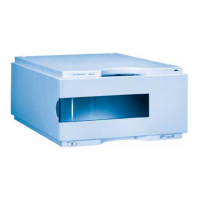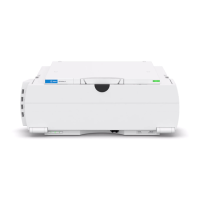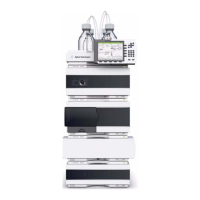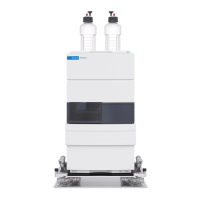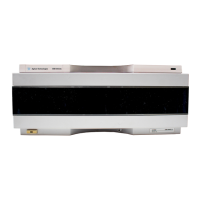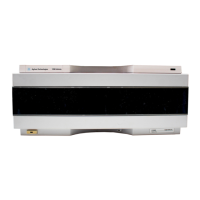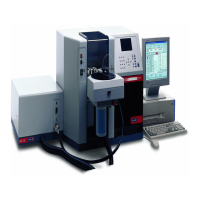102 1100 Series DAD and MWD User Manual
5 How to optimize the Detector
Optimizing Selectivity
Quantifying Coeluting Peaks by Peak Suppression
In chromatography, two compounds may often elute together. A conventional
dual-signal detector can only detect and quantify both compounds
independently from each other if their spectra do not overlap. However, in
most cases this is highly unlikely.
With a dual-channel detector based on diode-array technology, quantifying
two compounds is possible even when both compounds absorb over the whole
wavelength range. The procedure is called peak suppression or signal
subtraction. As an example, the analysis of hydrochlorothiazide in the
presence of caffeine is described. If hydrochlorothiazide is analyzed in
biological samples, there is always a risk that caffeine is present which might
interfere chromatographically with hydrochlorothiazide. As the spectra in
Figure 59 show, hydrochlorothiazide is best detected at 222 nm, where
caffeine also shows significant absorbance. It would therefore be impossible,
with a conventional variable wavelength detector, to detect
hydrochlorothiazide quantitatively when caffeine is present.
